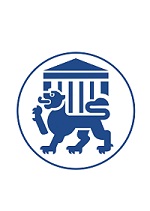COMMUNICATION BETWEEN CONDUCTOR AND AUDIENCE: SOUNDPAINTING
Building: Rēzeknes Tehnoloģiju akadēmija, Atbrīvošanas aleja 115
Room: 215. auditorija
Date: 02.12.2016 12:10 PM – 12:35 PM
Last modified: 28.11.2016
Abstract
Today, in the traditional musical performances, performers play notes and make music according to conductor’s instructions. This is a usual situation for all. Especially concerts which we went to as an audience, when we have pieces down pat or recognize, it leads us to think less. Thus, it also ensures that we engage in an event of a single-sided audience.
Soundpainting is the multidisciplinary live composing sign language for Musicians, Dancers, Actors and Visual Artists created by Walter Thompson in Woodstock, New York 1974. Presently (2015) the language comprises more than 1500 gestures that are signed by the Soundpainter to indicate the type of the material desired by the performers. The creation of the composition is realized through the parameters of each set of signed gestures.
The Soundpainter (the composer) standing in front (usually) of the group communicates a series of signs using hand and body gestures indicating specific and/or aleatoric material to be performed by the group. The Soundpainter develops the responses of the performers, molding and shaping them into the composition then signs another series of gestures, a phrase, and continues on this process of composing the piece.
Soundpainting is a useful tool to create dialogue between not only Soundpainter and performers but also soundpainter and audience. Soundpainters’ signs gesture to community and at the same time he can sign gestures to audience and then they respond in sound. Then Soundpainter determines the next instruction based on the response. By this way Soundpainting brings audience into the active component of the performance as communicate among Soundpainter, performers and audience. This research is a qualitative study and data was obtained by literature review.
Keywords
References
Bilgin, Y. (2016). Soundpainting Uygulamalarının Öğrencilerin Özgüveni Üzerindeki Etkileri. Ondokuz Mayıs Üniversitesi Eğitim Bilimleri Enstitüsü. Yayımlanmamış Yüksek Lisans Tezi. Samsun.
Duby, M. (2006). Soundpainting As A SystemFor The Collaborative Creation Of Music In Performance. Submitted in partial fulfilment of the requirements for the degree of doctor of philosophy. PretoriaUniversity. South Africa.
Fırıncıoğlu, S. (2011). John Cage – Seçme Yazıları. Pan Yayıncılık. İstanbul.
Kaptan, S. (1989). Bilimsel Araştırma ve Teknikleri. Tek Işık Matbaası. Ankara.
Minors, H. J. (2012). “Music And Movement In Dialogue: Exploring Gestures In Soundpainting”. Les Cahiers de la Societeque becoise de recherche en musique. 13 (1-2) pp. 87-96 ISSN: 1480-1132.
Oskay, Ü. (1982). Müzik ve Yabancılaşma. Aristo, Huizinga ve Adorno Açısından Bir Ön Çalışma. Dost Kitabevi Yayınları. Ankara.
Suzuki, S. (2010). Sevgiyle Eğitmek. Alfred Publishing. Porte Müzik Ltd. İstanbul.
Thompson, W. (2006). Soundpainting: The Art of Live Composition. Workbook 1. No publisher.





